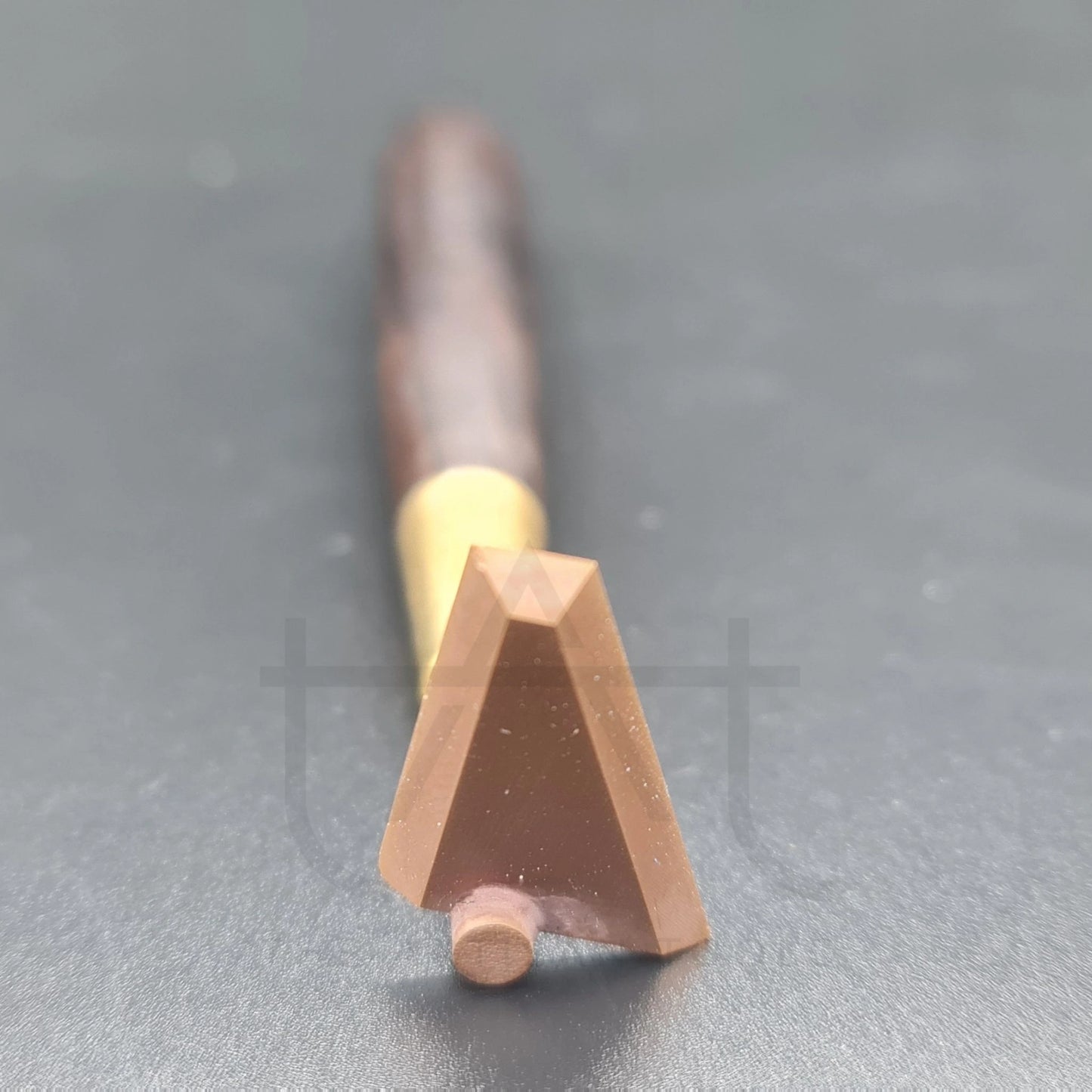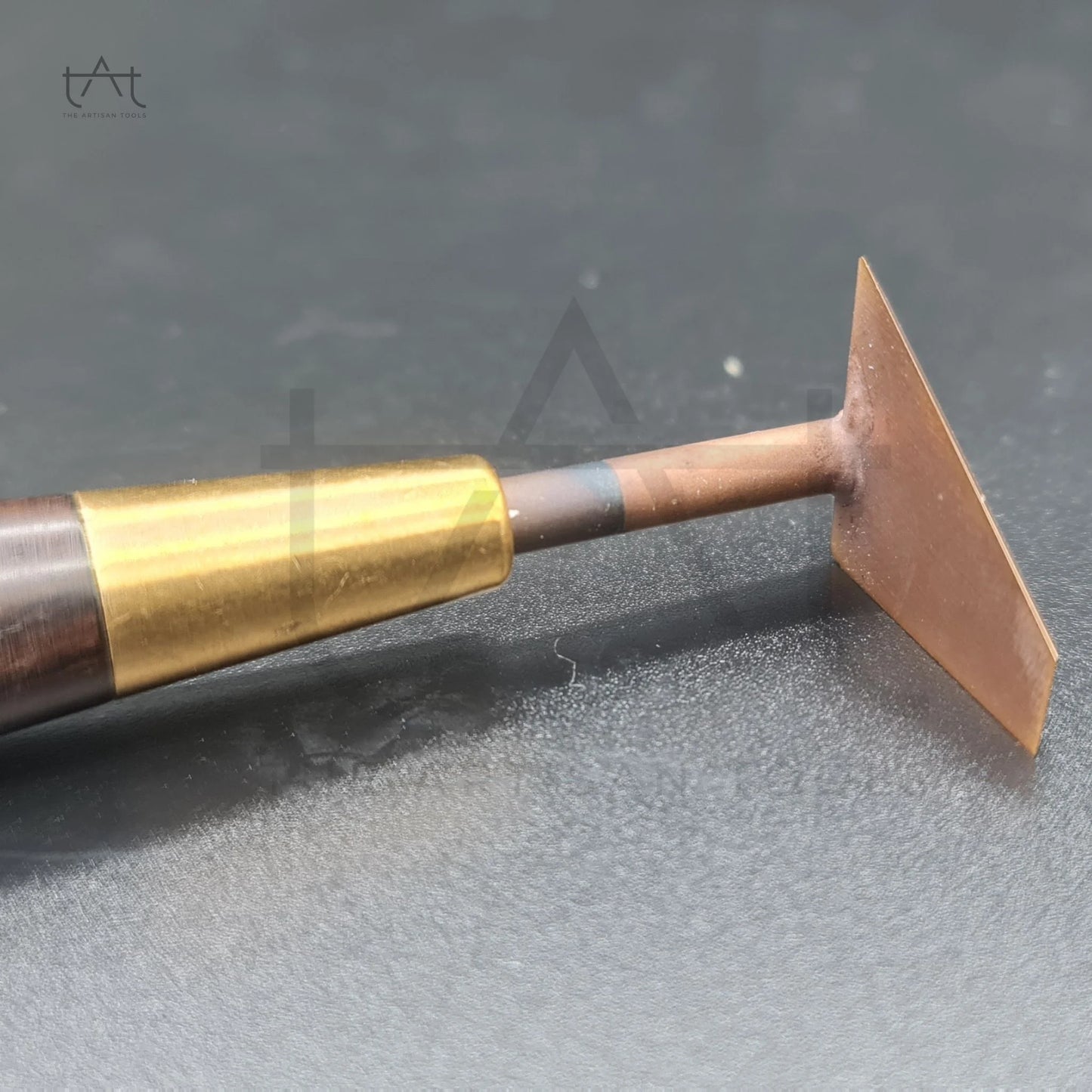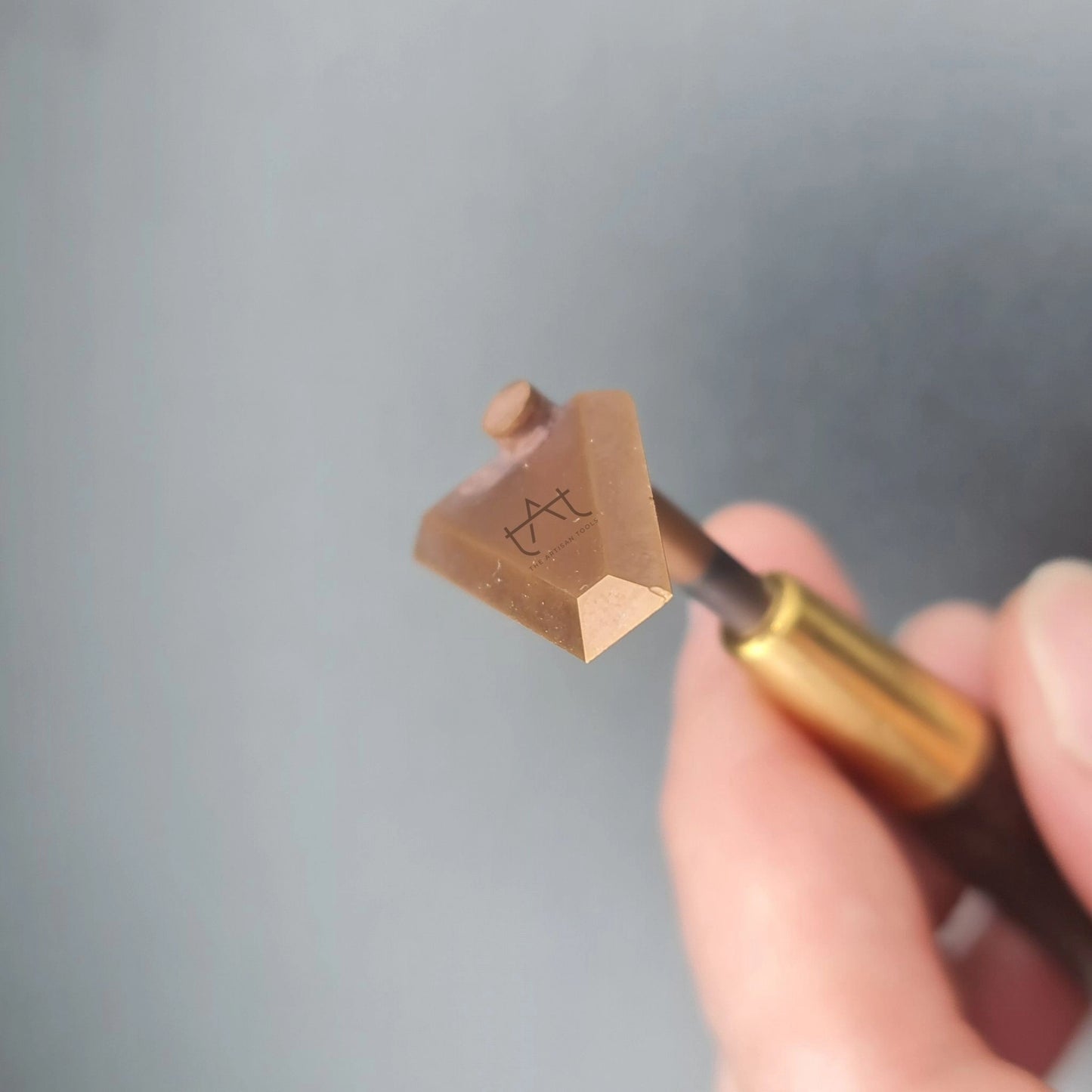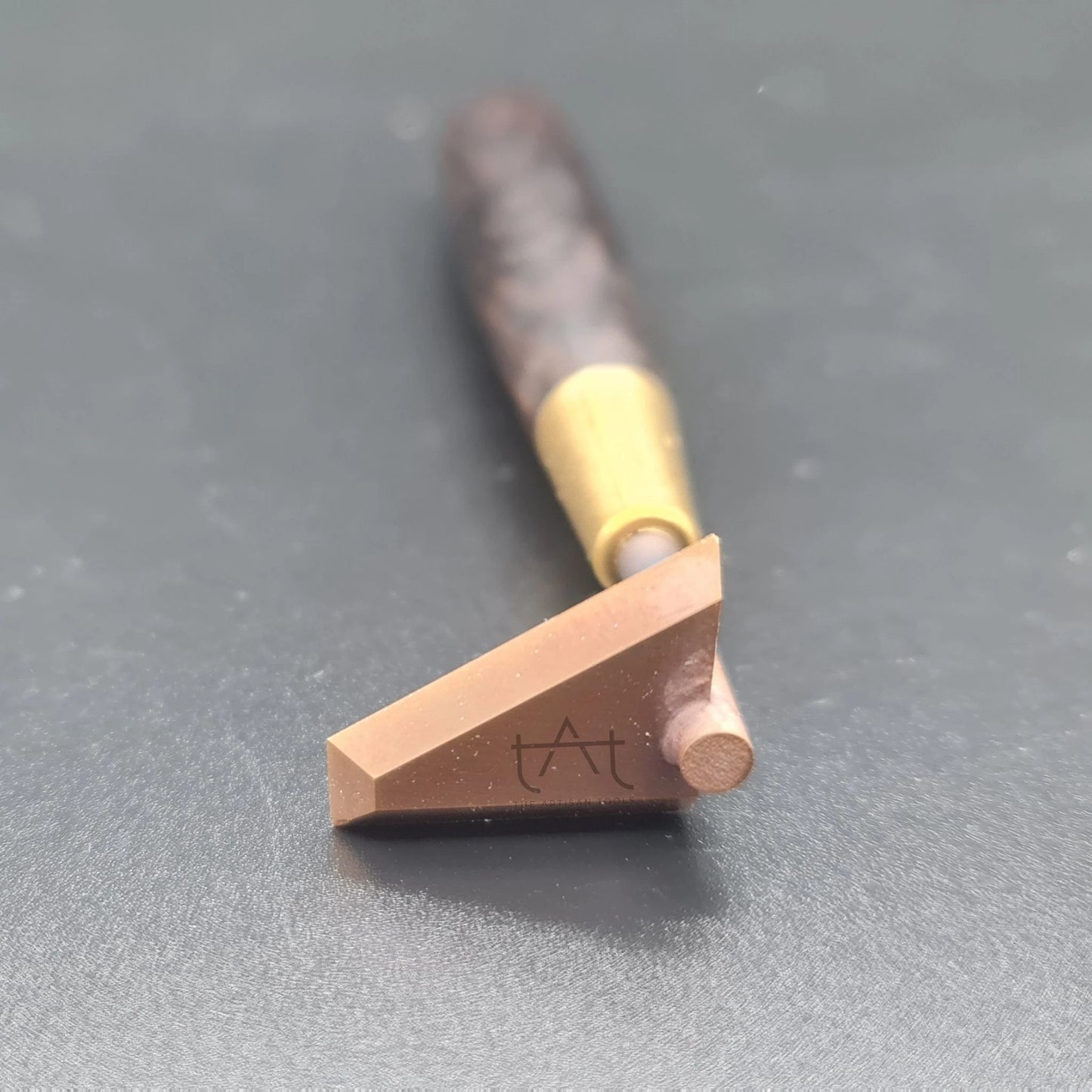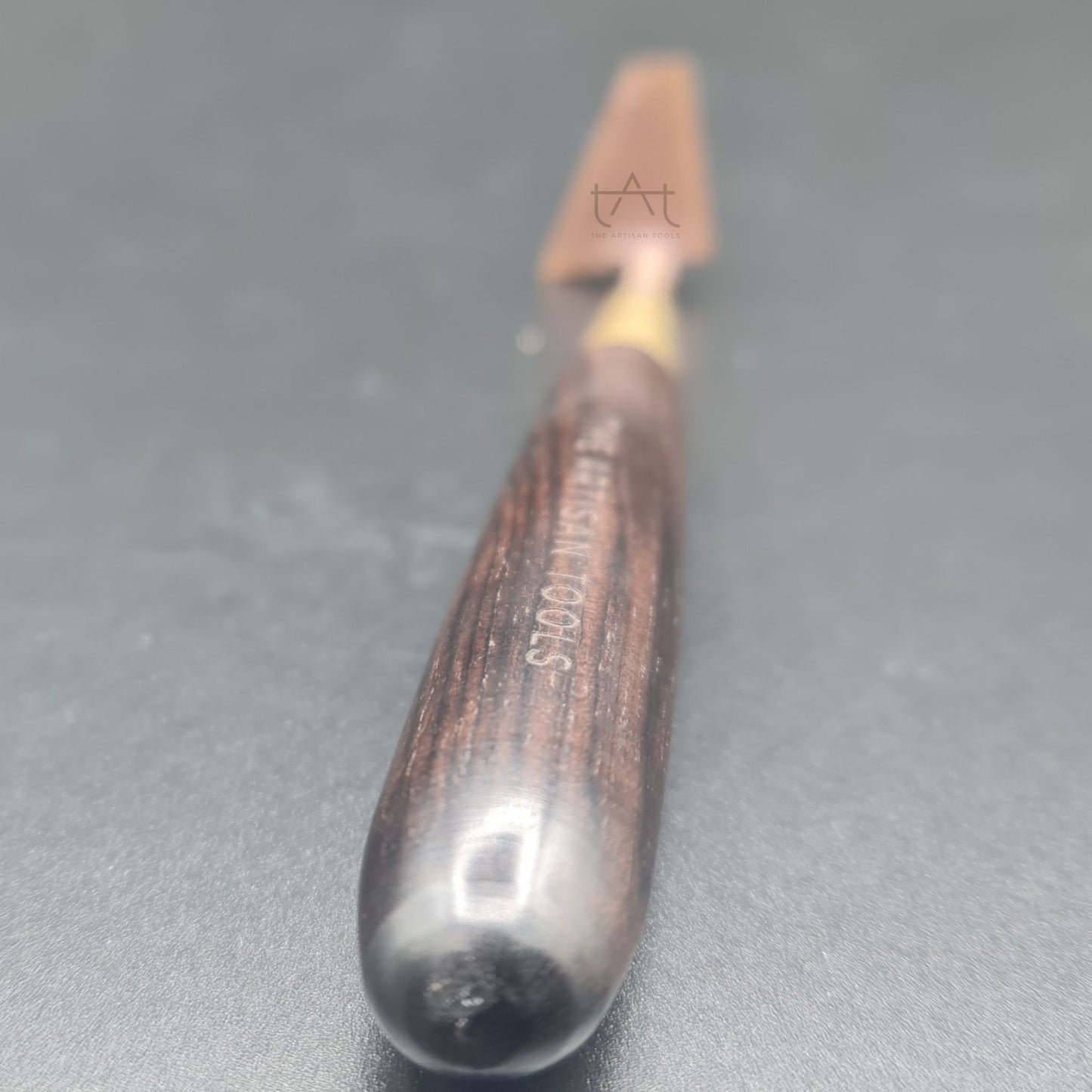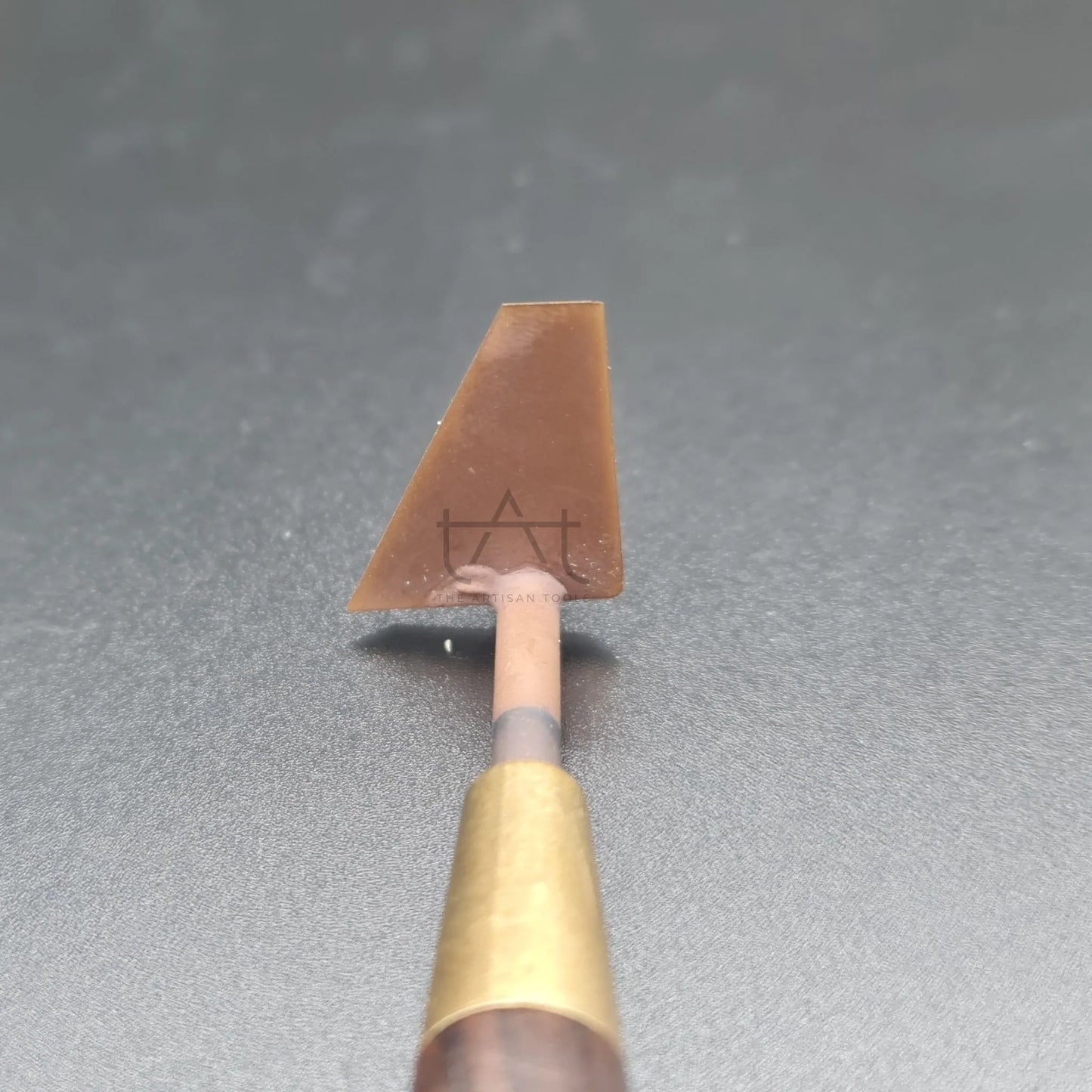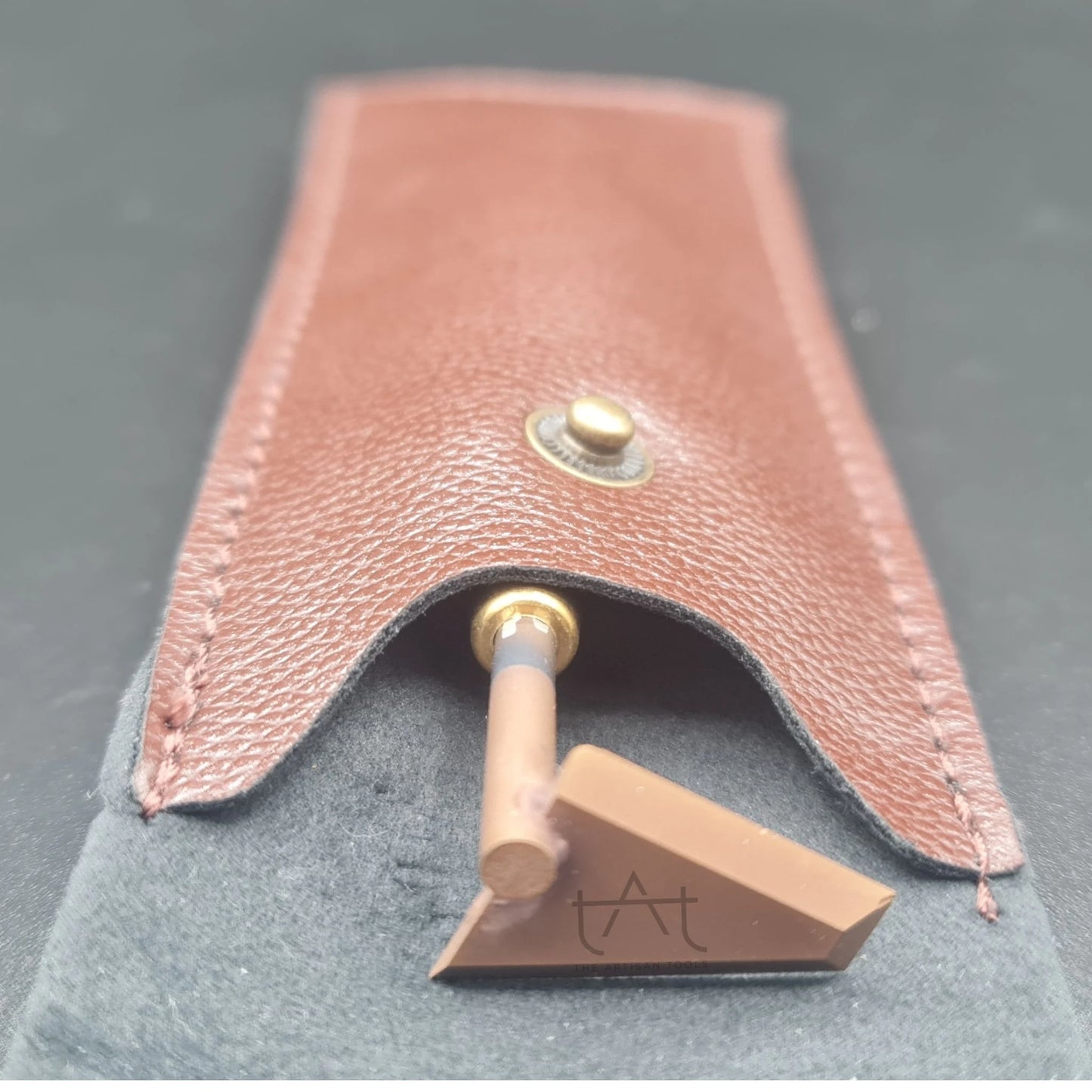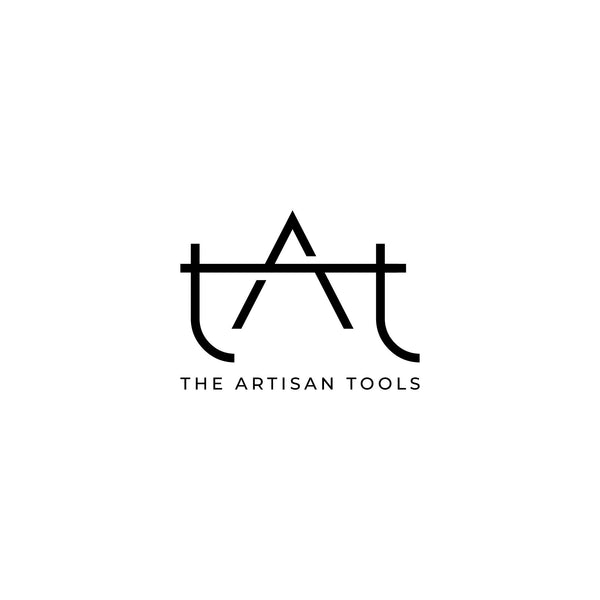The Artisan Tools
Professional Ceramic Trimming Tool TRAPEZIUM (Premium)
Professional Ceramic Trimming Tool TRAPEZIUM (Premium)
Couldn't load pickup availability
This pottery trimming tool (also referred to as a clay turning tool or trimming scraper) features a trapezoid-shaped head and is crafted from tungsten carbide, a material significantly harder than the steels commonly used in similar tools for reshaping or trimming clay. Thanks to this, both its sharpness and overall lifespan greatly exceed those of conventional steel tools, delivering higher-quality results when molding or trimming clay.
Additionally, we’ve applied a copper-colored Physical Vapor Deposition (PVD) coating to the trimming blade. This special coating protects the cutting edge of the tool, further extending its service life on the potter’s wheel, and guarding it against corrosion.
This professional-grade clay scraper outperforms many other pottery shaping tools on the market. Our goal was to develop a trimming tool that achieves the best possible finish. The current design is the outcome of testing numerous designs/models until we arrived at this ergonomic shape, which boosts productivity and simplifies trimming, scraping, and polishing. Its trapezoid form and specific angles make it a versatile tool, allowing you to approach the clay from different angles to obtain various results. You can see it in the simple video we’ve included alongside the images.
A soft case is included so you can conveniently store this pottery cutter after each use.

Frequently Asked Questions (FAQ)
1) Does it hold its edge longer than stainless steel tools for pottery or sculpture?
Yes. Because of the selected tungsten carbide quality, the lifespan of this hard metal can be 8 to 10 times longer than that of a typical stainless steel blade—even before considering the extra coating we add, which also helps delay wear.
2) Is the coating some kind of paint?
No, it’s not cosmetic—it’s functional. This PVD (Physical Vapor Deposition) treatment, specifically applied for ceramic work in vacuum furnaces, adds an extra layer that improves the tool’s wear resistance. It protects against oxidation and the heat generated by abrasive materials (such as standard ceramic bodies, especially those containing grog).
3) Does tungsten carbide have any drawbacks compared to typical potter’s or sculptor’s tool materials like steel?
Not in terms of performance when profiling or trimming ceramics. If there’s a downside, it’s that a strong impact (for instance, dropping the tool on a hard floor) could chip or break the edge because, while it’s much harder than steel, it lacks flexibility. This brittleness can cause breakage after a severe knock, whereas steel would simply bend or remain intact in a similar situation.
4) Is the included case made from animal products?
No, it’s made from synthetic materials.
5) Does it require any maintenance?
No, simply rinsing it with water after each use is sufficient.
Share
